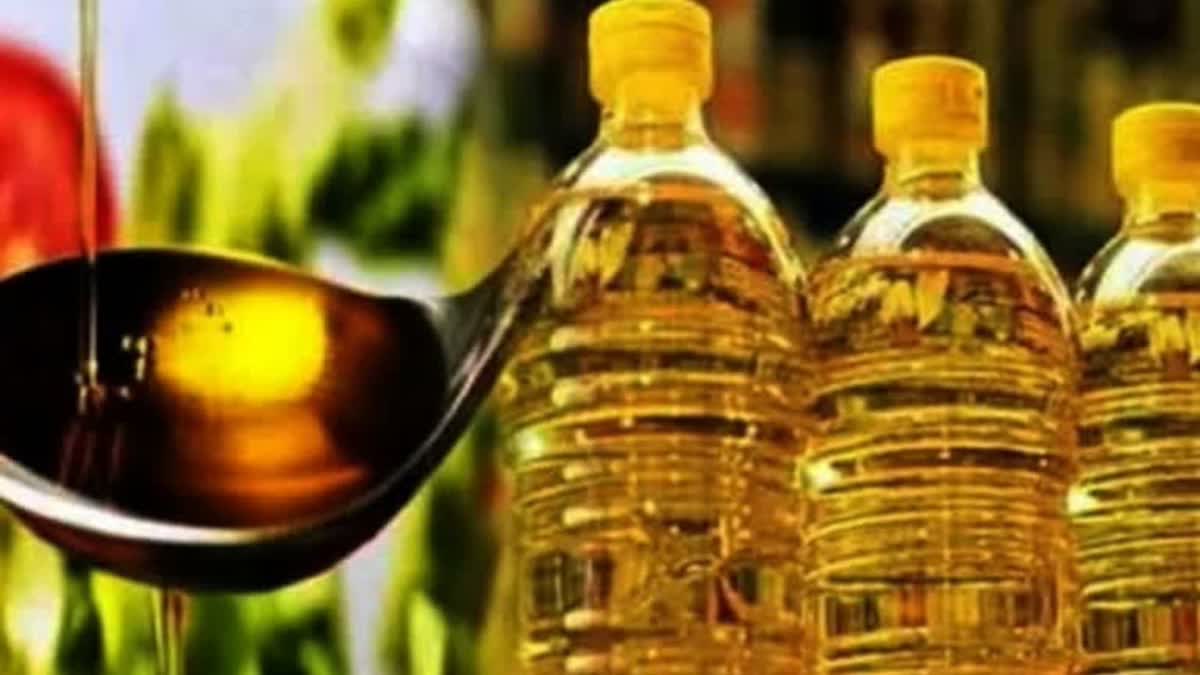New Delhi: A report released by NITI Aayog on Edible Oils titled ‘Pathways and Strategies for Accelerating Growth in Edible Oils Towards Atmanirbharta’ highlights that over the past decades, per capita consumption of edible oil in the country has seen a dramatic rise, reaching 19.7 kg/year. This surge in demand has significantly outpaced domestic production, leading to a heavy reliance on imports to meet both domestic and industrial needs.
As per report, in 2022-23, India imported 16.5 million tonnes (MT) of edible oils, with domestic production fulfilling only 40-45 per cent of the country’s requirements. This situation presents a substantial challenge to the country’s goal of achieving self-sufficiency in edible oils.
“It presents a detailed roadmap to address existing challenges, focusing on bridging the demand-supply gap and developing new approaches to attain self-sufficiency. Under a Business-As-Usual (BAU) scenario, the national supply of edible oil is projected to increase to 16 MT by 2030 and 26.7 MT by 2047,” it states.
Based on the ‘Static/Household Approach’, projections indicate a smaller demand-supply gap of 14.1 MT and 5.9 MT by 2030 and 2047, respectively. However, if the per capita consumption recommended by the ICMR-NIN is followed, the country is projected to have a surplus of 0.13 MT and 9.35 MT by 2030 and 2047 respectively.
To achieve self-sufficiency in this sector, the report suggests several strategic interventions to bridge the existing gap and ensure long-term sustainability, as mentioned in the report.
Demand:
The past decades, per capita consumption of edible oil in the country has seen a dramatic rise, reaching 19.7 kg/year. This surge in demand has significantly outpaced domestic production, leading to a heavy reliance on imports to meet both domestic and industrial needs.
Import:
India, the 5th largest economy globally, is a significant player in the global edible vegetable oil sector, ranking fourth behind the USA, China, and Brazil. It contributes a substantial global share, accounting for roughly 15-20 percent of the global oilseed area, 6-7 percent of vegetable oil production, and 9-10 per cent of total consumption.
Under a BAU scenario:
The national supply of edible oil is projected to increase to 16 MT by 2030 and 26.7 MT by 2047.
Overview of India’s Edible Oil Sector:
Within Indian agriculture, oilseeds hold the second-highest position in the area, and production, surpassed only by food grains. India's diverse agro ecological conditions enable the cultivation of nine annual oilseed crops, including groundnut, rapeseed-mustard, soybean, sunflower, sesame, safflower, niger seed, castor and linseed. However, a major challenge lies in rainfed agriculture, with 76 per cent of the oilseed cultivation area contributing 80 per cent of total production. Rainfed agriculture is particularly susceptible to biotic and abiotic stresses, jeopardizing overall production stability and poses a significant risk of reducing overall production, necessitating implementing strategies to enhance crop resilience.
Growth Trends and Instability in Edible Oil Crops:
The area, production, and yield of oilseeds experienced trend growth rates of 0.90 per cent, 2.84 per cent, and 1.91per cent, respectively, during 1980-81 to 2022-23. Notably, in the most recent decade, production and yield displayed growth rates of 2.12 per cent and 1.53 per cent, respectively. The total area under oilseeds showed a positive growth trend in all decades except during 1991-2000.
Goal of Atmanirbharta:
Increasing growth in the edible oil sector towards self-reliance involves a multifaceted strategy. The proposed strategy charted in this report is structured across three key pillars, Crop Retention and Diversification, Horizontal Expansion, and Vertical Expansion. Horizontal Expansion Strategy aims to strategically increase the area dedicated to cultivating edible oil crops. This strategy seeks to bring more land under cultivation for specific oilseeds. Potential avenues for achieving this include rice fallow lands and highly suitable wastelands for transformation through palm cultivation and promoting crop retention and diversification in regions that currently focus on other agricultural crops.
Minimizing Import Dependency
Over the years post 2011-12, India has seen an exponential increase in the import of edible oils. The accelerating demand of domestic consumers has surpassed the supply capacity of domestic consumers by a great amount. This overdependence exposes India to various vulnerabilities, including volatile prices, market fluctuations, and potential supply disruptions, impacting national security and economic stability. The path of self-reliance minimizes risks caused by external factors along with unnecessary economic and political dependence on other nations. During the year 2021-22, a Centrally Sponsored Scheme, National Mission on Edible Oil-Oil Palm (NMEO-OP), has been launched to promote oil palm cultivation for making the country “Atmanirbhar” in edible oils with a particular focus on North Eastern States and Andaman & Nicobar by increasing area of Oil Palm from 3.70 lakh hectares (Lha) to 10.00 Lha in 2025-26 in 15 States / UTs.
Achieving Nutritional Security:
In the Indian context, achieving nutrition security is deeply intertwined with the health and sustainability of the edible oils industry. Edible oils not only form an essential component of diverse culinary traditions across the nation but also play a critical role in nutritional wellbeing. They serve as a primary source of dietary fats and essential fatty acids like omega-3 and omega-6, offering vital nutrients such as vitamins and antioxidants. Consumed in moderation, edible oils contribute to a balanced and varied diet, enhancing food palatability while enabling the absorption of fat-soluble vitamins like A, D, E, and K.
Enhancing Economic Development:
Achieving self-sufficiency in edible oils offers significant economic advantages for India. Firstly, it creates a closed-loop system where a substantial portion of the industry’s generated wealth remains within the country. Atmanirbharta generates substantial foreign exchange savings by reducing dependence on imports. For India, this translates to a reduced need for significant edible oil imports, positively impacting its balance of payments and overall financial stability. This is crucial as the edible oil sector; a pivotal economic component directly influences the nation’s GDP, the report read.



